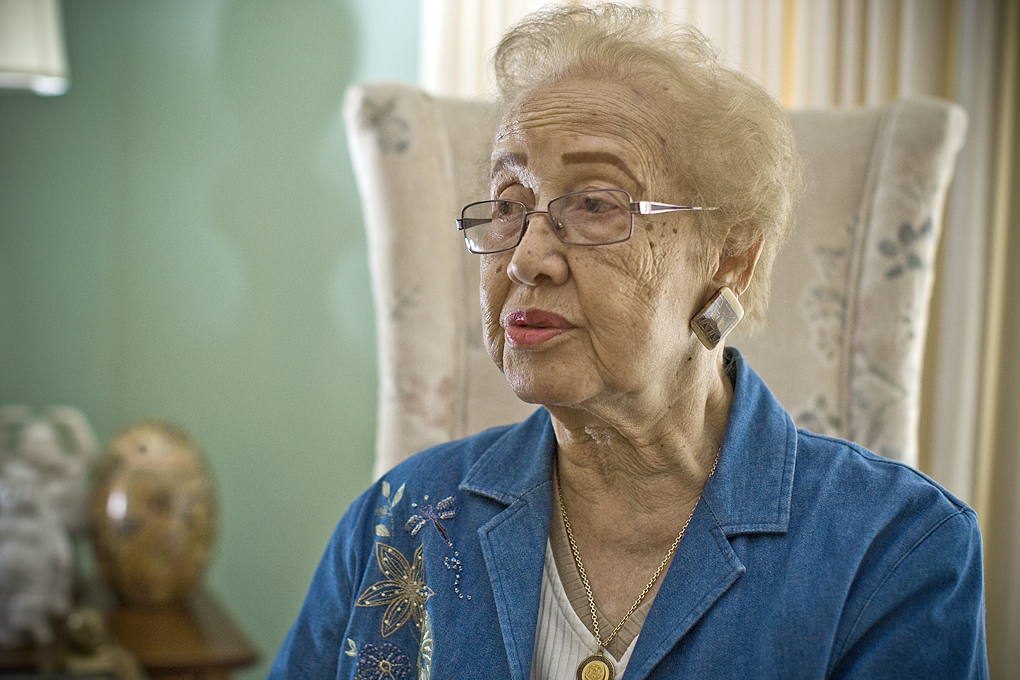The movie, Hidden Figures' Black Girl Magic, Black excellence, or whatever you want to call it, just keeps getting better!
As final weekend box office totals pour in, the film about three real-life black mathematicians (played by Taraji P. Henson, Octavia Spencer, Janelle Monáe) driving NASA’s position in the Space Race amid racial segregation in 1960s Virginia, has surpassed best picture frontrunner La La Land to become the top-grossing best picture Oscar nominee of the year!
Initially projected to have earned much less, Hidden Figures has made $119.5 million in North America, while La La Land‘s tally clocks in at $118.2 million.
The movie is about the United States race against Russia to put a man in space. To get there first, NASA found untapped talent in a group of African-American female mathematicians that served as the brains behind one of the greatest operations in U.S. history.
Based on the unbelievably true-life stories of three of these women, known as “human computers,” we follow these women as they quickly rose the ranks of NASA alongside many of history’s greatest minds specifically tasked with calculating the momentous launch of astronaut John Glenn into orbit, and guaranteeing his safe return. Dorothy Vaughn, Mary Jackson, and Katherine Johnson crossed all gender, race, and professional lines while their brilliance and firmly cemented them into U.S. history as true American heroes.
The film is based upon the non-fiction book by Morgot Lee Shutterly. In 2013, Shutterly, who's dad worked for NASA, founded The Human Computer Project, an organization whose mission is to archive the work of all of the women who worked as computers and mathematicians in the early days of the National Advisory Committee for Aeronautics (NACA) and the National Aeronautics and Space Administration (NASA). She sold the rights to her book in 2014 and the rest is history.
Here's what you need to know about these incredible ladies:

Dorothy Johnson Vaughan (played by Octavia Spencer)
Dorothy Johnson Vaughan was an African American mathematician who worked at the National Advisory Committee for Aeronautics (NACA), the predecessor agency to NASA. Prior to arriving at NACA's Langley Memorial Aeronautical Laboratory in 1943, Vaughan worked as a mathematics teacher at R.R. Moton High School in Farmville, Virginia.
In 1949, Vaughan became the head of the West Area Computers, a work group composed entirely of African-American female mathematicians. Mathematician Katherine Johnson was assigned to Vaughan's group before being transferred to Langley's Flight Research Division.
YOU MAY ALSO LIKE: How Octavia Spencer Overcame Dyslexia To Read Her Lines In Hollywood
Vaughan continued at Langley after NACA became NASA, specializing for the rest of her career in electronic computing and FORTRAN programming. She worked in the Langley Research Center's Analysis and Computation Division, and also participated in Scout Project (Solid Controlled Orbital Utility Test system) tests at Wallops Flight Facility.
She retired from NASA in 1971, and died November 10, 2008.

Mary Jackson (played by Janelle Monae)
Mary earned her Bachelor's degrees in mathematics and physical science from Hampton Institute in 1942. Jackson spent twenty years as a Girl Scout leader. She was noted for helping Black children in her community to create a miniature wind tunnel.
After Hampton Jackson began her career there as a research mathematician, or computer, at the Langley Research Center. After five years at NASA and after taking several additional courses, she joineda special training program and was promoted to aerospace engineer. She then worked to analyze data from wind tunnel experiments and real-world aircraft flight experiments at the Theoretical Aerodynamics Branch of the Subsonic-Transonic Aerodynamics Division at Langley. Her goal was to understand air flow, including thrust and drag forces. Many years later, she was assigned to work with the flight engineers at NASA.
TAKE A LOOK: Janelle Monae Says Failure Is The One Thing That Made Her Successful
Jackson worked to help women and other minorities to advance their careers, including advising them how to study so that they could change their titles from "mathematician" to "engineer" to increase their chances of promotion.
After 34 years at NASA, Jackson reached the highest level of engineer that was possible for her without becoming a supervisor. She decided to take a pay cut and change positions to become an administrator in the Equal Opportunity Specialist field and retired in 1985
Jackson was married with two children. She died on February 11, 2005.

Katherine Johnson (played by Taraji P. Henson)
Born in 1918, Katherine Johnson was so gifted she was enrolled in high school at 10. At 14, she entered West Virginia State College; by 18, she was a college graduate. After World War II, NACA started recruiting African-Americans. Johnson was...
... hired in 1953 as a temp with an all-male flight research team, but quickly became a permanent, important part of the team.
In 1961, Alan Shepard became the first American to be in space, but a huge hat-tip to Johnson, who calculated the trajectory of his trip. Johnson looked at the problem as a parabola, and worked out the geometry backwards to get it right. The next year, John Glenn personally requested that Johnson recheck the calculations that a computer originally did.
In 2015, President Barack Obama gave the nation’s highest civilian honor to Johnson.

And in 2016, had a NASA building named after her, called the Katherine G. Johnson Computational Research Facility and it’s at the Langley Research Center in Hampton, Virginia. Ironically, it's the same building where she was originally considered "too black" and "too female" to work in, was named in her honor.
Johnson is the only living member of the three woman. She is 97-years old.









